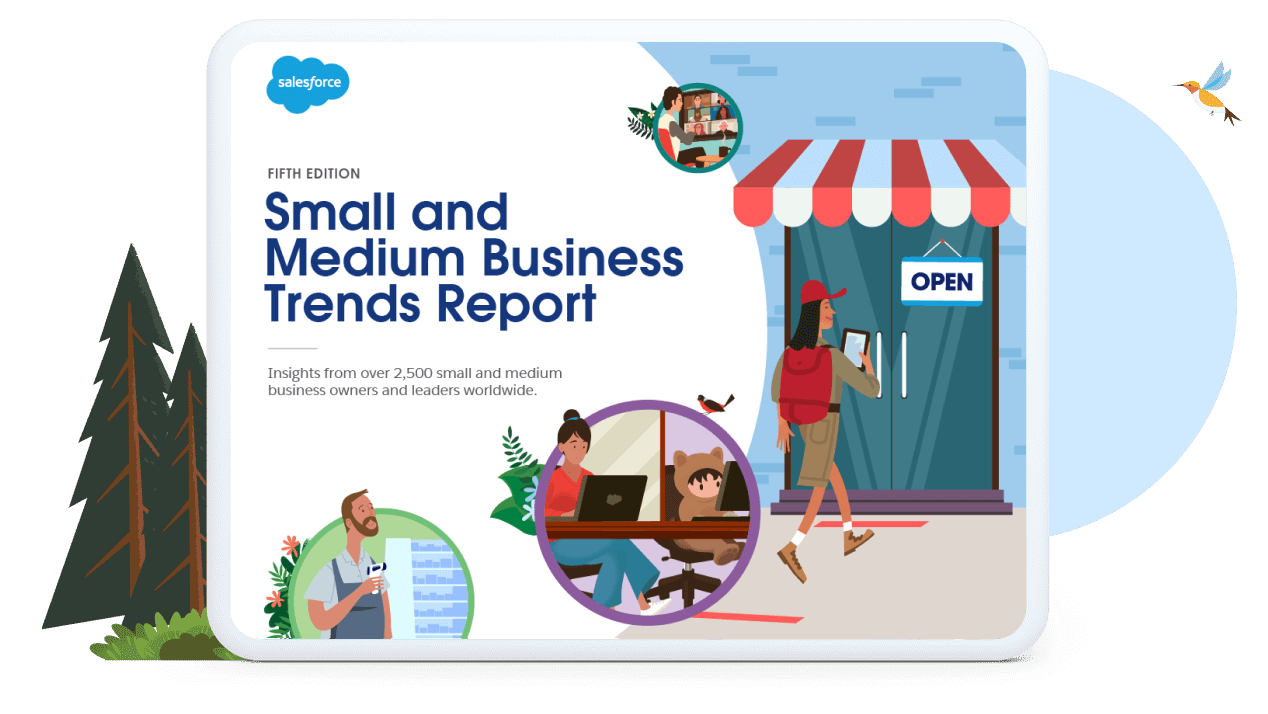Your SME’s Road to the Cloud: 10 Tips for Cloud Implementation



For SMEs, getting in the cloud is crucial for keeping up with customers and competitors. Here are 10 tips for cloud implementation.
Salesforce UK
From on-demand movies, food and music to on-the-go voice assistants and 24-7 shopping, the cloud has revolutionised how we live. In fact, it’s hard to remember what life was like before the cloud provided us with seemingly limitless access to nearly everything.
The cloud has been a game changer for SMEs, enabling them to reach new customers, develop innovative business models, empower remote workers and transform in the face of change.
The pace and scale of cloud adoption have been awe-inspiring – as has its impact on the UK economy. And while the cloud helped keep customers and companies connected during lockdown, its applications extend far beyond commerce. From the Internet of Things to self-driving cars to incredible AR and VR experiences, the cloud will continue to carry us to new places.
But how can SMEs accelerate their digital roadmap to make the most of the cloud? And how can cloud implementation take your business to the next level?
The SMB Trends Report 5th Edition
Discover what’s driving today’s small businesses – and see where they might be headed next.

What is cloud computing?
Cloud computing refers to a type of computing that doesn’t necessitate having physical, onsite storage. Rather, SMEs that use cloud computing rely on off-site partners to provide storage, software, networking and other computing capabilities via the Internet. This allows SMEs to access software, applications and services from wherever they are, at any time.
What are the advantages of cloud implementation?
Cloud computing can be an incredibly powerful tool for SMEs. Some of the benefits of cloud computing include:
- Increased agility and flexibility
- Better data safeguards and improved disaster recovery
- Automatic updates
- Lower capital outlays
- Real-time networking to drive collaboration
- Improved tools to empower remote workforces
- Better version control and a Single Source of Truth
- Pay-as-you-go-services that let SMEs compete with larger companies
- Increased efficiency and productivity
10 tips for cloud Implementation
When moving to the cloud, there are a number of things to consider when planning your SME’s cloud implementation. For instance, it’s best to start small, work with a few apps and use cases, and get a feel for how your enterprise could best use cloud computing before scaling up.
It’s also a good idea to find a cloud implementation partner who can understand your business goals and offer the appropriate solutions. In other words, you’ll want a strategic partner, not just a technology provider.
Here are 10 more tips for cloud implementation:
- Decide whether your SME requires SaaS (Software as a Service), PaaS (Platform as a Service) or IaaS (infrastructure as a Service). The difference mainly lies in the amount of control you need. PaaS provides SMEs with a platform to build custom applications, while SaaS delivers software over the Internet. IaaS, meanwhile, allows SMEs to pay for all resources as they go, without having to own and maintain hardware.
- Put together a cloud implementation team from across departments and functions, and assign roles for deploying and monitoring the cloud services. Educate the team and get all the stakeholders on board with your change management strategy.
- Create short- and long-term strategies for cloud implementation that are centred around your unique business objectives and pain points. What KPIs might help you evaluate and tweak the cloud services after implementation?
- Make a list of all the mission-critical tools and apps your SME uses, and see how they would work in a cloud-based environment. How can the cloud be leveraged to improve the functionality and effectiveness of these tools? What new tools will you need?
- See if creating simple cloud-based apps could help you automate or streamline processes that have previously been productivity killers. Creating custom apps has never been easier, and low- and no-code apps have made it possible for even non-tech-savvy SMEs to develop business-changing solutions.
- Consider how any legacy systems will be affected by cloud implementation. Is it possible to simply shift operations to a cloud-based platform? Will you need to build a bespoke, hybrid solution for optimal integration? For instance, if your business has a CRM, you’ll want to ensure the team has access to all the data they need when they need it.
- Take a broad overview of how the workforce will be impacted. Look for any digital skills gaps and consider whether on-demand training platforms could help fill those gaps. On a more granular level, how will cloud implementation empower different functions or departments in your SME? How might workflows and processes change in those departments?
- Make sure your data governance is in order and that your SME can comply with any rules and regulations, as well as ensure best practices for data security. Data control is one of the important factors when choosing between SaaS, PaaS and IaaS.
- Look at potential new business models and revenue streams that could be unlocked through cloud implementation. Can connecting with a global workforce provide any impactful new opportunities?
- Perform a cost analysis, considering not only the ongoing costs of cloud service and maintenance but also the initial outlay for re-designing apps and programs and training the workforce. Compare this to the cost of paying for on-site hardware, expensive licenses and robust IT teams, which might be necessary with on-site solutions.
Gear up for a more connected future
If you consider the points above, you’ll have a good idea of what your SME needs prior to looking for a cloud computing solution. And once you have a solid blueprint created around your SME’s needs – and a strategic cloud implementation partner in place – your SME will be on the road to a more productive, more agile and more connected future.
To see more about how cloud implementation can help your SME connect its processes and unlock benefits across the value chain, download our free eBook, The Connected Small Business: Your Guide to Faster, Smarter Business Processes.
The SMB Trends Report 5th Edition
Discover what’s driving today’s small businesses – and see where they might be headed next.






















